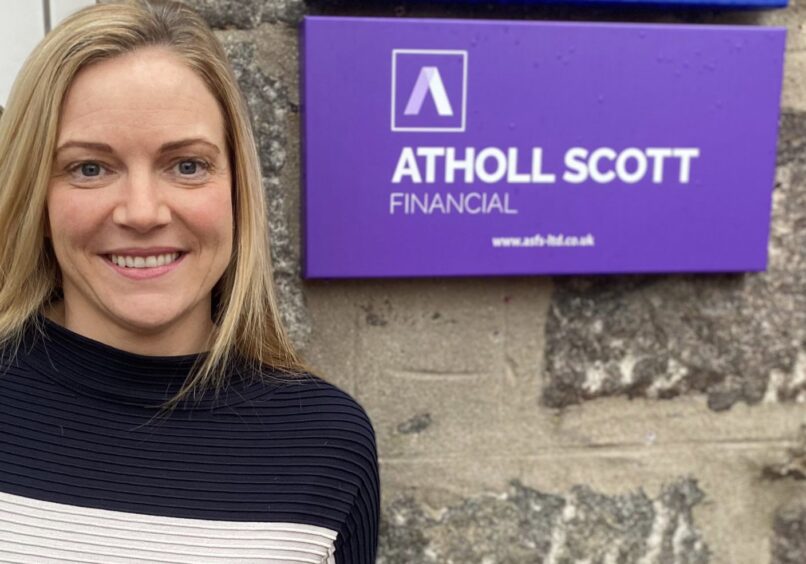How much should I save for retirement? This is a question most of us ask at some stage in our lives.
-
Some Press and Journal online content is funded by outside parties. The revenue from this helps to sustain our independent news gathering. You will always know if you are reading paid-for material as it will be clearly labelled as “Partnership” on the site and on social media channels.
This can take two different forms.
“Presented by”
This means the content has been paid for and produced by the named advertiser.
“In partnership with”
This means the content has been paid for and approved by the named advertiser but written and edited by our own commercial content team.
And that fact that there has never been so much choice when it comes to pensions and their flexibility, makes retirement planning rather daunting. Making important decisions about what to do and when, is always advisable with some sound professional advice.
Planning is key. So, perhaps speaking to a financial planner is something you should consider if you have concerns about whether you have enough money to live comfortably in retirement.
Unfortunately, many people seek professional financial advice when it’s too late, explains Lesley Pottinger. Lesley is a chartered financial planner at Atholl Scott Financial Services in Aberdeen. In her role, she has advised clients (of all ages) on how not to run out of money when they retire. And she would encourage people across the North East not to put off essential planning.
One way Lesley and the team at Atholl Scott Financial Services scope out a future plan for retirement for clients is by ‘cash flow modelling’.
What is ‘cash flow modelling’?
It is beneficial to work out if you are saving enough for retirement to achieve your desired lifestyle. It can also help to identify any potential shortfall or surplus in cash flow pre- and post-retirement.
Lesley explained: “We use cash flow modelling to help us demonstrate how long our client’s money is likely to last in retirement. This is a personalised planning service that we base on current finances, how much you are saving and investing, spending patterns and our clients’ goals and aspirations for the future.”
“This can be used during working life and in retirement.”
What could affect your future finances?
- projected inflation
- investment performance
- life expectancy
“It gives our clients a powerful visual insight into the health of their current and future finances, helping them to understand whether their goals are achievable and where we might need to make changes,” added Lesley.
Do you have a financial plan in place? Find out how to do this today.
How much should I save for retirement? What should I do with my pension?
When you are approaching retirement, pensions are complicated, they offer more options now than ever before. One of the options available is being able to access your pensions when you want to – flexible access. Along with the flexibility comes choice and tax planning. However, because there are so many options, it is understandable why so many pre-retirees seek advice from financial planning professionals.
As well as a cash flow modelling service, Atholl Scott Financial Services review your existing pensions that you may have accumulated through your lifetime. The retirement option advice will be suited to your requirements, taking into account the health of your current and future finances.
Pensions: You need to know your options
People receive their annual statements from their pension providers and all pensions have a set retirement age. As they are approaching that selected retirement date they may assume that they have got to take the pension benefits at this time. However, there are options and it is essential for anyone who is approaching retirement and do not know their options to seek professional advice.
You have four options, advises Lesley. They are:
- Flexible (or flexi) access drawdown: pension pot remains invested and you withdraw money when you need it. You can vary the income you take, which means you can manage the tax you pay.
- A guaranteed income (annuity): provides a guaranteed, regular income for life.
- Take it all in cash (25% tax-free)
- Keep it invested if you don’t need it.
Don’t take it all in cash!
The most tempting, but most potentially damaging, is option number 3: Take it all in cash.
Lesley explains why: “You can withdraw money from your pension as a lump sum. However, only the first 25% is tax-free and doesn’t affect your personal tax allowance. Withdrawing anything more than this is taxable. It’s also added to any other income you have, which could push you into a higher tax bracket.”
“Also, an important factor is that in most cases, any pensions you have can be passed outside of your estate and won’t be subject to Inheritance Tax.
“Some people prefer option 1: flexi access to your pensions, where you can take a lump sum, set up regular withdrawals, stop and start, increase or decrease payments to suit your spending requirements.
“On death, with this retirement plan you can pass your pension fund to your nominated beneficiaries. However, the biggest risk with his type of arrangement is you could run out of money without the correct professional advice. Planning is key,” she added.
How professional advice with my pensions gave me peace of mind
Like most of us, Carol Wright wondered: how much should I save for retirement? So, she contacted Atholl Scott Financial Services because living the same lifestyle they were used to, once retired, was something both she and husband Kevin wanted.
Now 59, retiree Carol, from Ellon, is very glad she did. Here’s her story:
“I have dealt with Atholl Scott for many years for pensions, investing and ISAs so we trusted them from an investment portfolio point of view. We wanted to know how best to use our investments and pensions. Our main goal was that we wanted to have the lifestyle we were used to when we retied.
“People often think this is not possible, but it is. And it was for us, with proper planning.
“My top tip would be to put as much as you can into a private pension fund, from your mid-forties.
“I retired at 56, because we could afford to, after working for Aberdeen City Council for 20 years. My husband ran his own business.
“I found Atholl Scott Financial Services very good at advising on private and workplace pensions and what you can afford to put into your ISAs each year, because you can take income from these investments too.
“I took as much as I could from my tax-free pension when I retired. More recently, I have used Atholl Scott Financial Service’s cash flow modelling tool. It really did give peace of mind as it showed that based on the finances we currently have, it will allow us to live to 95 and not worry about money.
“Debbie, Lesley and the team at Atholl Scott are all very knowledgeable and quick to respond to your queries. I will continue to use their services throughout my retirement as circumstances, taxation and legislation (such as the recent reduction in capital gains tax) change.”
If you are nearing retirement and would like to make your money work for you, in the best way possible, contact Lesley at Atholl Scott Financial Services. Email: lesley@asfs-ltd.co.uk




